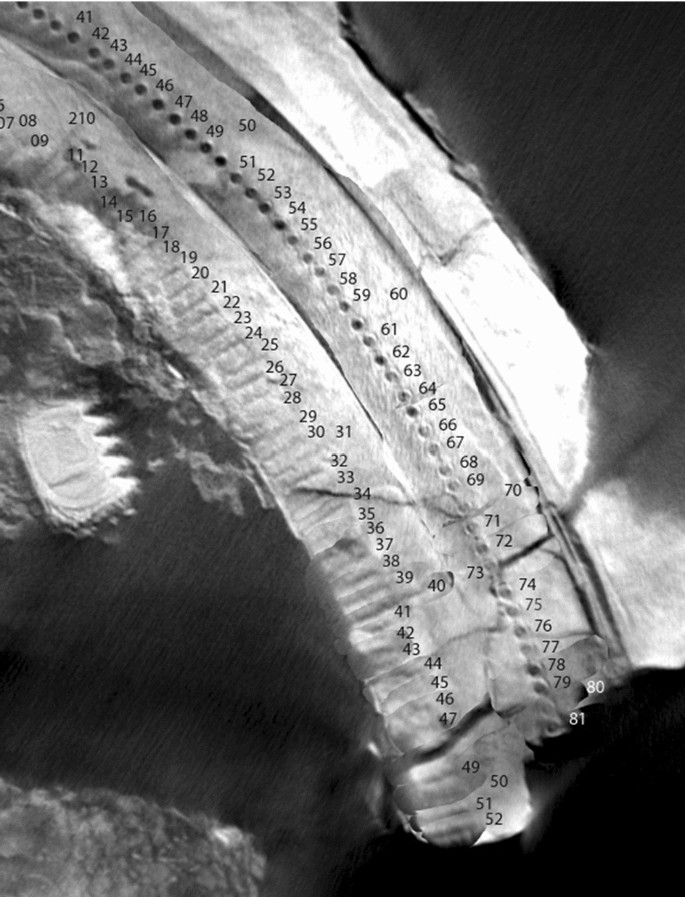Posted by Neil Wyatt on 04/10/2021 21:48:01:
…
On the face of it 360 or 365 seem right, but measurements of the hole spacings suggests 354 holes. Errors of ~0.1mm in hole placement in radius would be sufficient to account for this error (because a randomly wandering sequence of holes around the circumference would always appear to be longer distance).
…
As the Lunar Year is 354 days possibly the mechanism is based on, or predicts, phases of the moon rather than earth years and days. In which case the hole placement and accuracy looks reasonable for hand methods.
I like Ady's method, but would expect the reference holes to be more accurately set than intervening holes and don't see much sign of that – they're all a bit random. If I was making it, I'd try marking out a much larger circle, and using a long rod to scale down to the instrument's circle. The outer end of the rod could be moved a fixed distance from the previous point to step out the angle, or moved between pre-made marks.
Not sure how I'd mark out the outer circle because the lowest factor of 354 is a prime number (59) which can't be made easily by dividing by two. However, as 60 is easily divided by two, maybe it was done by marking out 60 divisions on the big outer ring and then losing one by eye.
A long rod being a little bendy coupled with a 60/59 approximation might explain why some of the holes are noticeably off, see the wide gap between 55 and 56.
The mathematics of the day were fairly advanced, making the theory available to the builder. What's surprising is the use of gears in an instrument this ancient. Most impressive.
Bow driven drill seems likely, but not obvious to me how very a largish number of fine drill heads could be made to the same diameter. They weren't ordered off the internet!
Dave
david bennett 8.







